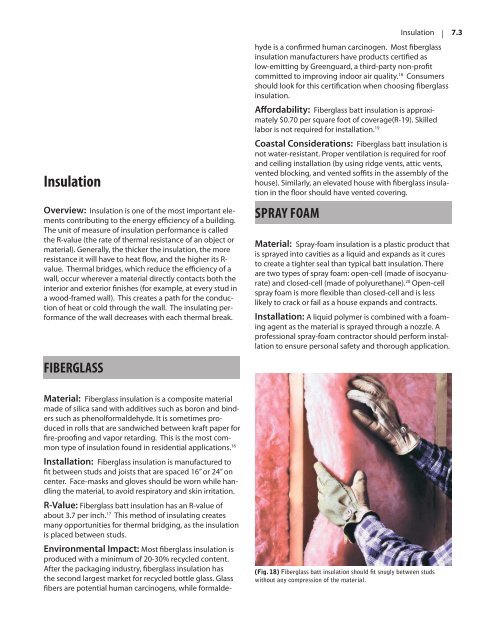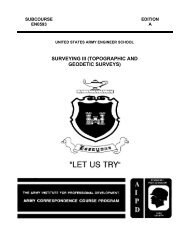Alternative Construction Research Guide - GCCDS
Alternative Construction Research Guide - GCCDS
Alternative Construction Research Guide - GCCDS
You also want an ePaper? Increase the reach of your titles
YUMPU automatically turns print PDFs into web optimized ePapers that Google loves.
InsulationOverview: Insulation is one of the most important elementscontributing to the energy efficiency of a building.The unit of measure of insulation performance is calledthe R-value (the rate of thermal resistance of an object ormaterial). Generally, the thicker the insulation, the moreresistance it will have to heat flow, and the higher its R-value. Thermal bridges, which reduce the efficiency of awall, occur wherever a material directly contacts both theinterior and exterior finishes (for example, at every stud ina wood-framed wall). This creates a path for the conductionof heat or cold through the wall. The insulating performanceof the wall decreases with each thermal break.Insulation | 7.3Material: Fiberglass insulation is a composite materialmade of silica sand with additives such as boron and binderssuch as phenolformaldehyde. It is sometimes producedin rolls that are sandwiched between kraft paper forfire-proofing and vapor retarding. This is the most commontype of insulation found in residential applications. 16Installation: Fiberglass insulation is manufactured tofit between studs and joists that are spaced 16” or 24” oncenter. Face-masks and gloves should be worn while handlingthe material, to avoid respiratory and skin irritation.R-Value: Fiberglass batt insulation has an R-value ofabout 3.7 per inch. 17 This method of insulating createsmany opportunities for thermal bridging, as the insulationis placed between studs.Environmental Impact: Most fiberglass insulation isproduced with a minimum of 20-30% recycled content.After the packaging industry, fiberglass insulation hasthe second largest market for recycled bottle glass. Glassfibers are potential human carcinogens, while formaldehydeis a confirmed human carcinogen. Most fiberglassinsulation manufacturers have products certified aslow-emitting by Greenguard, a third-party non-profitcommitted to improving indoor air quality. 18 Consumersshould look for this certification when choosing fiberglassinsulation.Affordability: Fiberglass batt insulation is approximately$0.70 per square foot of coverage(R-19). Skilledlabor is not required for installation. 19Coastal Considerations: Fiberglass batt insulation isnot water-resistant. Proper ventilation is required for roofand ceiling installation (by using ridge vents, attic vents,vented blocking, and vented soffits in the assembly of thehouse). Similarly, an elevated house with fiberglass insulationin the floor should have vented covering.SPRAY FOAMMaterial: Spray-foam insulation is a plastic product thatis sprayed into cavities as a liquid and expands as it curesto create a tighter seal than typical batt insulation. Thereare two types of spray foam: open-cell (made of isocyanurate)and closed-cell (made of polyurethane). 20 Open-cellspray foam is more flexible than closed-cell and is lesslikely to crack or fail as a house expands and contracts.Installation: A liquid polymer is combined with a foamingagent as the material is sprayed through a nozzle. Aprofessional spray-foam contractor should perform installationto ensure personal safety and thorough application.FIBERGLASS(Fig. 18) Fiberglass batt insulation should fit snugly between studswithout any compression of the material.
















